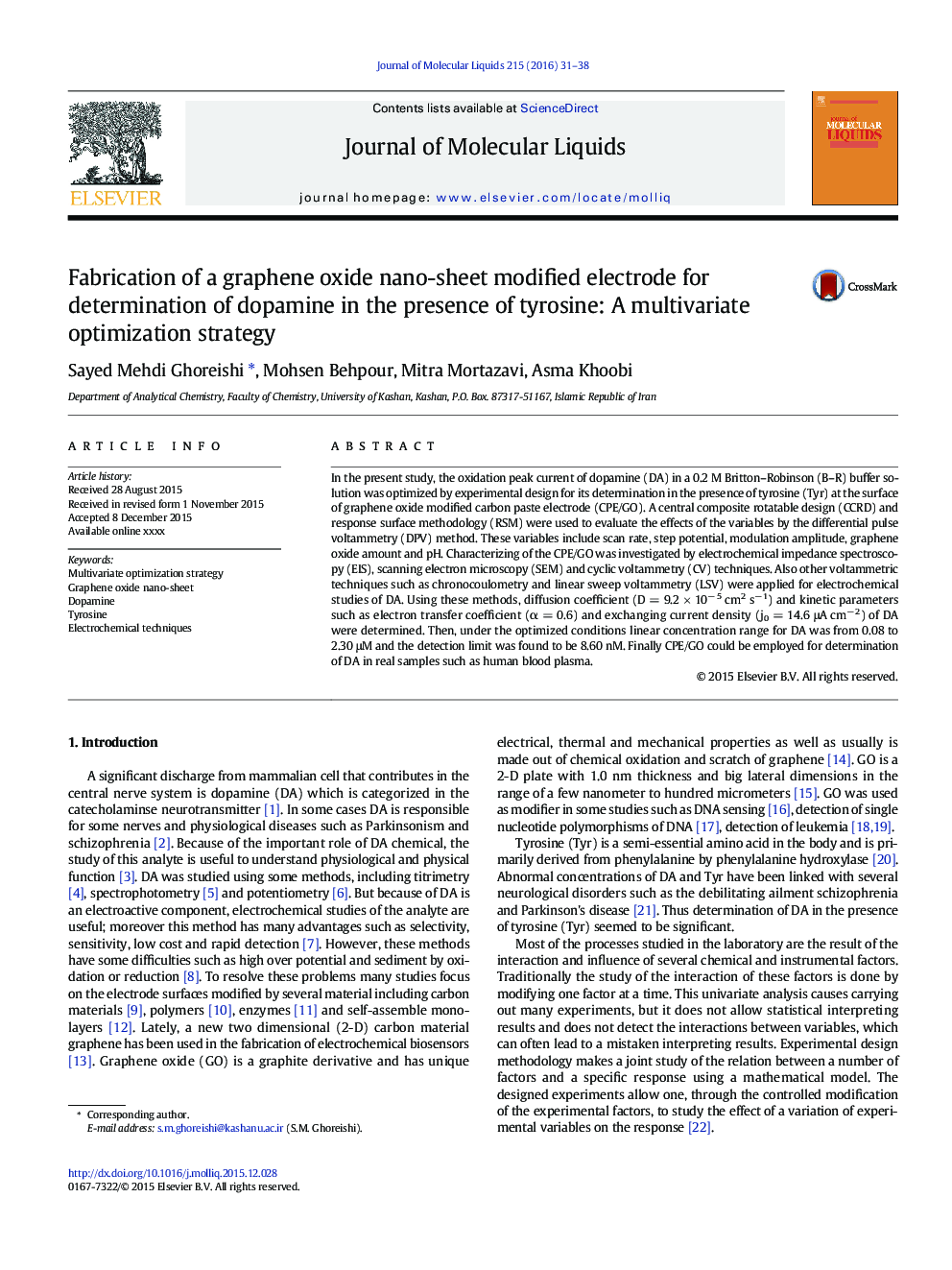| Article ID | Journal | Published Year | Pages | File Type |
|---|---|---|---|---|
| 5410275 | Journal of Molecular Liquids | 2016 | 8 Pages |
Abstract
In the present study, the oxidation peak current of dopamine (DA) in a 0.2 M Britton-Robinson (B-R) buffer solution was optimized by experimental design for its determination in the presence of tyrosine (Tyr) at the surface of graphene oxide modified carbon paste electrode (CPE/GO). A central composite rotatable design (CCRD) and response surface methodology (RSM) were used to evaluate the effects of the variables by the differential pulse voltammetry (DPV) method. These variables include scan rate, step potential, modulation amplitude, graphene oxide amount and pH. Characterizing of the CPE/GO was investigated by electrochemical impedance spectroscopy (EIS), scanning electron microscopy (SEM) and cyclic voltammetry (CV) techniques. Also other voltammetric techniques such as chronocoulometry and linear sweep voltammetry (LSV) were applied for electrochemical studies of DA. Using these methods, diffusion coefficient (D = 9.2 Ã 10â 5 cm2 sâ 1) and kinetic parameters such as electron transfer coefficient (α = 0.6) and exchanging current density (j0 = 14.6 μA cmâ 2) of DA were determined. Then, under the optimized conditions linear concentration range for DA was from 0.08 to 2.30 μM and the detection limit was found to be 8.60 nM. Finally CPE/GO could be employed for determination of DA in real samples such as human blood plasma.
Related Topics
Physical Sciences and Engineering
Chemistry
Physical and Theoretical Chemistry
Authors
Sayed Mehdi Ghoreishi, Mohsen Behpour, Mitra Mortazavi, Asma Khoobi,
